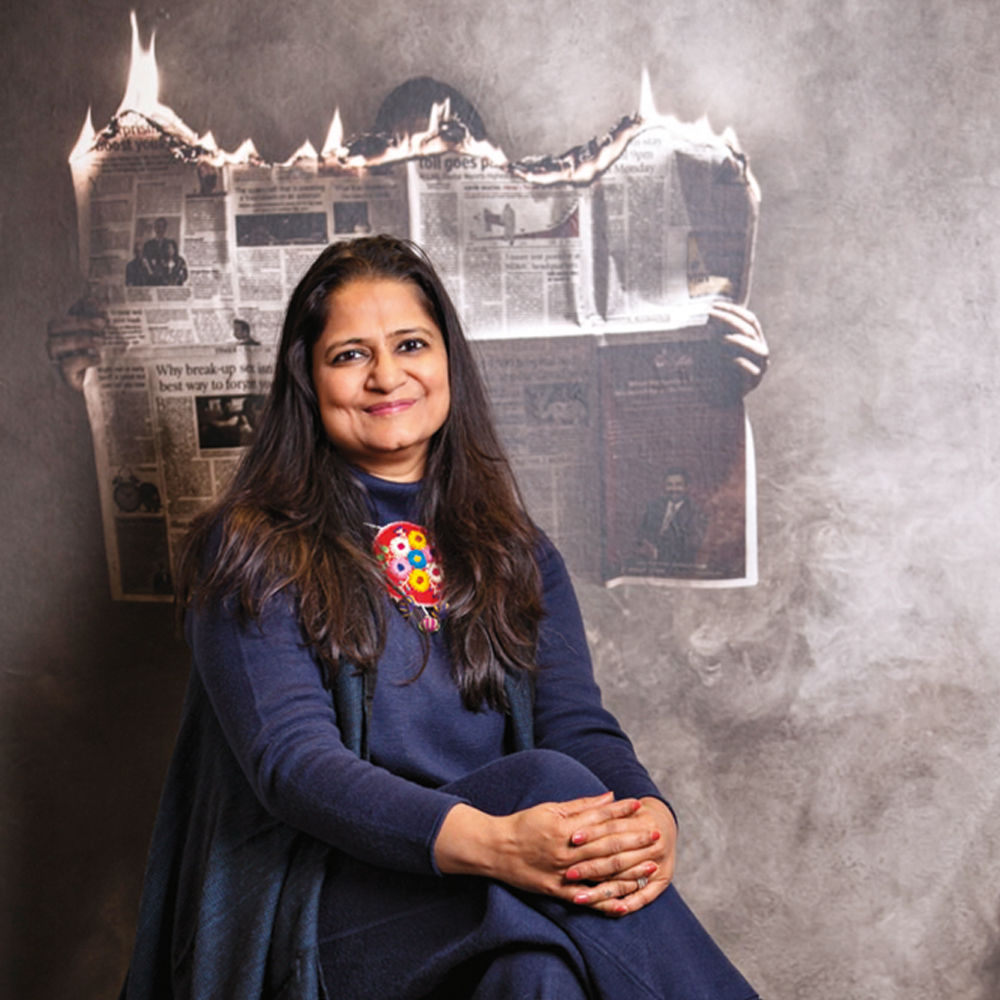

For Rachna Agarwal, Founder and Design Ideator, Studio IAAD, mood boards serve as a bridge between concept and reality, translating abstract ideas into tangible, immersive narratives. Her process begins with defining the mood and emotion a space should evoke, using color as the foundation and layering in textures and materials to build depth. Join us as we decode the method behind the creative madness, offering an exclusive glimpse into the minds of design’s finest.
How has your mood board creation process evolved with digital tools, and what balance do you strike between physical and digital elements in your conceptual phase?
Digital tools have revolutionised the mood board creation process, offering a vast array of possibilities for exploration and refinement. Platforms like Canva and Pinterest allow us to experiment with layouts, colours, and textures swiftly, enabling a dynamic approach to conceptualisation. However, we still value physical mood boards for their tactile appeal and the ability to experience materials firsthand. Striking a balance, we often begin digitally to map ideas and then integrate physical elements like fabric swatches, paint chips, and samples to bring the design to life. This hybrid approach ensures precision while preserving the sensory connection to the space.
Walk us through your thought process when you begin a new mood board – what elements do you consider first, and how do you layer colours, textures, and materials to build your narrative?
We start by identifying the overarching theme or emotion the space should evoke, drawing inspiration from the project brief, client preferences, or even nature. Colours are my foundation—we choose a palette that aligns with the narrative and gradually introduce complementary shades. Textures come next, balancing smooth and rough elements to add depth and interest. Finally, we layer in materials that reflect the story, like wood for warmth or metals for modernity. Each addition is intentional, creating a harmonious interplay that tells a cohesive story, ensuring the mood board resonates with the client’s vision and the design intent.
How do you use mood boards to communicate with clients, and what techniques have you developed to help them understand your vision through these visual tools?
Mood boards are my storytelling tools, translating abstract concepts into tangible visuals for clients. I include clear labels, brief annotations, and contextual images to explain how each element fits into the bigger picture. Presenting a mix of digital renders and physical samples helps bridge imagination and reality, allowing clients to see and feel the design. I’ve also embraced 3D mood boards and AR tools, which give clients an immersive preview of their space. By tailoring each presentation to their preferences, I ensure they feel confident and connected to the vision, fostering trust and collaboration throughout the process.
Can you share an example of a project where the mood board played a pivotal role in shaping the final design outcome? What were the key elements that translated most successfully from concept to reality?
One project where the mood board played a transformative role is the serene Max128 apartment in Noida. The clients stipulated a design vocabulary that blends contemporary and Indian design aesthetics. In tune with their requirements, we drafted a mood board with an earthy colour palette for the social spaces, spilling into a deck designed for slow living. This cohesive visual framework guided the design process, ensuring that every element contributed to the theme of comfort and well-being.
Key elements like terracotta-hued brick walls, vibrant greenery, and a comfortable lounge zone transitioned beautifully from concept to reality, defining the outdoor deck as a tranquil retreat. In the interiors, the study, with its monochromatic scheme punctuated by a striking green accent, became a showstopper, embodying vibrancy and creativity. Similarly, the dining area, designed as a versatile entertainment space with a large table and console, perfectly complemented the open-plan living area.
Looking ahead to 2025, what emerging materials, technologies, or design philosophies do you anticipate will dominate mood boards? How are factors like biophilic design, smart home integration, and climate-responsive architecture influencing your conceptual process?
Looking ahead to 2025, mood boards will increasingly reflect the fusion of technology and sustainability. Emerging materials like bio-composites, recycled textiles, and carbon-neutral finishes will likely dominate, alongside innovations in smart surfaces that integrate seamlessly with home automation.
Biophilic design continues to inspire, focusing on natural textures, earthy tones, and greenery that blur the lines between indoors and outdoors. Climate-responsive architecture shapes choices with materials and designs that enhance energy efficiency and adapt to diverse environments. Incorporating these elements into the conceptual process, we see mood boards evolving into immersive storytelling tools, combining sensory-rich visuals with layers of functionality and purpose. These boards will showcase aesthetics and articulate a commitment to well-being and responsible living.
Retail design is a balancing act. Between creating spaces that attract and those that sell,…
A few days ago, I found myself navigating an unfamiliar (for me) corner of Delhi—Vasant…
Jugal Mistri, Founder & Principal Architect, JMA Mumbai, sees mood boarding as an evolving narrative…
Apoorva Shroff approaches mood boarding as both an analytical and intuitive process, relying on observation…
One of the most striking aspects of Shivani Ajmera and Disha Bhavsar’s dynamic is the…
There’s something magical about a home that feels like it’s whispering tales of another era…